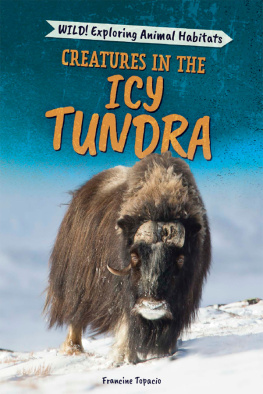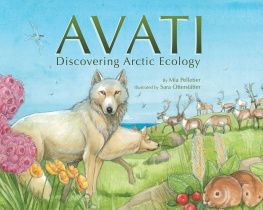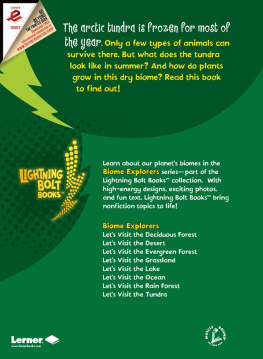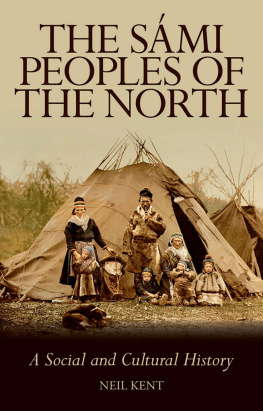The Smi Narrative Tradition
This book sets out to document and analyse the Smi narrative tradition. It considers the worldviews inherent in the narratives and links them to traditional cosmology and other cultural expressions (such as joik and duodji). The chapters address a variety of issues, including the care of children, the perception of nature, disputes over land and natural resources, local justice, the spiritual world of everyday life, and Lstadianism. Sketching Smi history and the cultural context of storytelling, Nergrd also considers the modern challenge for the narrative tradition. Drawing on long-term fieldwork and research, the volume is valuable reading for Indigenous studies and disciplines such as anthropology.
Jens-Ivar Nergrd is Professor Emeritus at UiT The Arctic University of Norway.
The Smi Narrative Tradition
Cosmopolitans on the Arctic Tundra
Jens-lvar Nergrd
First published 2022
by Routledge
2 Park Square, Milton Park, Abingdon, Oxon OX14 4RN
and by Routledge
605 Third Avenue, New York, NY 10158
Routledge is an imprint of the Taylor & Francis Group, an informa business
2022 Jens-Ivar Nergrd
The right of Jens-Ivar Nergrd to be identified as author of this work has been asserted by him in accordance with sections 77 and 78 of the Copyright, Designs and Patents Act 1988.
All rights reserved. No part of this book may be reprinted or reproduced or utilised in any form or by any electronic, mechanical, or other means, now known or hereafter invented, including photocopying and recording, or in any information storage or retrieval system, without permission in writing from the publishers.
Trademark notice: Product or corporate names may be trademarks or registered trademarks, and are used only for identification and explanation without intent to infringe.
British Library Cataloguing-in-Publication Data
A catalogue record for this book is available from the British Library
Library of Congress Cataloging-in-Publication Data
A catalog record has been requested for this book
ISBN: 978-1-032-05355-4 (hbk)
ISBN: 978-1-032-06300-3 (pbk)
ISBN: 978-1-003-20160-1 (ebk)
DOI: 10.4324/9781003201601
Typeset in Sabon
by SPi Technologies India Pvt Ltd (Straive)
Dedicated to Jens-Eirik Nergrd and Jakob Mele
Preface
The Smi narrative tradition is a universe of knowledge and communication dealing with a broad range of issues related to nature, animals and humans. The narratives, anchored in a cosmology giving each of them a voice of its own, deal with conflicting issues and interests (they have) in common. The narrative material is a huge reservoir of knowledge and experience gather over generations in stories continuously retold, reinvented and reinterpreted in everyday life. The narratives address spiritual, emotional and practical matters and they influence memories and dialogues in families and communities. They host the view that humans share nature with animals and are responsible for their acting upon them.
Throughout history, the close companionship between humans, animals and nature led to degrading opinions of the Smi tradition in all four of the nations they inhabited: Russia, Sweden, Finland and Norway. During the most intensive colonization of land and people in the 18th, 19th and 20th centuries, the Smi were subjected to harsh treatment by the national states. Politics and authorities attacked the Smi language and tradition with support from the church and the scientific authorities. Neither of them fully understood nor accepted the tradition as a rational system of knowledge and values. The perception of nature communicating with people in a language of its own still has a strong standing in the Smi tradition. I term this the narrative tradition because of its origins and development in storytelling in practical everyday life. Looking in from the outside, most intellectuals and authorities regarded the narrative tradition as backward and superstitious. To some extent, this continues to be the case.
The book is based on long-term fieldwork and research in the Smi communities conducted over the past forty years. The locations for the fieldwork were the northernmost parts of Norway and Sweden and also a shorter study in North-West Russia. The fieldwork sites were Ullsfjord, Kfjord, Kautokeino, Karasjok, Porsanger, Tana, Neiden, Tysfjord, Ballangen, Vassdalen, Spansdalen, Lovoserow and vre Soppero (Saarivuoma siia). The fieldwork periods were of different extents in time; some lasted for several weeks and some for several years. The first was carried out in Sea-Smi communities in the 1970s and 1980s. The fieldwork in Karasjok and Porsanger, including the small community of Covadatmohkki, were carried out most intensively between 1990 and 2002 and they continue to the present day. The fieldworks in Tysfjord began in 2007 and that in Saarivouma took place in 2011. Both are still ongoing.
In previous books and articles, I have focused on Smi ways of living and the nature in which they exist. This book is a study of the narrative tradition and its influencing on ways of knowing, remembering and judging. The text deals with groups of narratives as they appear, in particular those related to the management of nature and resources. They serve as records of history and focus on values essential to everyday life. They are strongholds of the traditional cosmology and contain a coding system for dialogues with nature and people. The huge narrative material is essential for bridging the past to the present.
Herding and farming, hunting and fishing were the original home of the narrative tradition. Modern life has new ways of seeing and experiencing and the narrative tradition therefore belongs to a broad system of knowledge and communication. Still, it influences everyday life in matters of nature, spiritual concerns and issues of local disputes. The narratives keep records of nature and practices. Herding life is carried out on the same areas as it was hundreds of years ago, and so are the tracks for the herds. The small farms are still in their original locations. Fishing, hunting and berry picking are practiced in the very same landscapes that families and communities have used for generations. The narratives still guide activities in their original landscapes and activities. For many, they are one aspect of being Smi.
In my early fieldwork I had the idea that the narratives had their strongholds in the herding world, but I soon realized their vital presence in other communities and ways of living. In some of them the loss of the Smi language may even have made the narrative tradition stronger as a compensating element for the loss of language and other cultural expressions. On one occasion, I held a seminar for health care personnel about traditional Smi ideas about disease, health and healing practices. In particular, nurses and auxiliary nurses working close to patients told about daily encounters with the traditional ways of seeing them by elderly patients. Some of the personnel felt very uncomfortable in using the Norwegian word for superstition, diida in Smi, about the patients visions and opinions of problems linked to their cultural inheritance. The seminar decided that the Smi word diidaosku should be used instead of the Norwegian phrase overtro, which literally means opinions not fully rational.
This incident throws light on some consequences of the colonization: Smi communities were forced into a language that did not correspond to the meaning of the phenomenon as originally coined in Smi. Some of them are lucky to have entrepreneurs who are aware of the problem and able to support with protecting strategies. Of the greatest importance in the Smi defense against these colonizing processes was the hiding and undercover strategy the Lstadian movement opened for (). Together, they formed a dynamic force in the continuous transformation of a cultural soul that still could be recognized as Smi. The strong recognition of the herding world in the Smi community had, and still has, a double reference. It draws attention to a cultural integrity many Smi lost during the colonization process and it appreciates the position the herding world has in the outside world.












